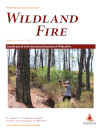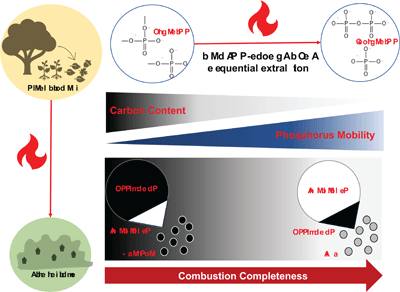International Journal of Wildland Fire
Volume 33
Number 1 2024
We developed empirical relationships linking fireline intensity and flame length, based on a compilation of data collected in field head fires, conducted worldwide in forest, shrubland and grassland. Two relationships emerged, respectively for forest and shrublands and for grasslands, and were deemed suitable for scientific and operational application.
This research expands on previous work exploring the decision making of US Forest Service wildfire managers, using social science methods to elucidate the factors that help drive their decisions to suppress or manage wildfires. We found a complex network of factors that show increasing ambiguity in the wildfire decision environment.
Citizen science provides an important opportunity for the wildfire community, enabling data collection at broad spatio-temporal scales. Direct fuel moisture measurement campaigns can maximise these benefits by accounting for natural differences in measurements between individuals. We quantify the magnitude and variability of differences during an intensive fuel moisture measurement campaign.
This paper describes a method to monitor forest fire progress using dual-polarisation Synthetic Aperture Radar (SAR) images combined with multi-scale segmentation and unsupervised classification. We aimed to take full advantage of the many different dimensions of feature parameter changes caused by forest fires, relying on time-series dual-polarised SAR imagery to achieve burned area extraction and forest fire progress monitoring.
Soil phosphorus (P) availability in natural ecosystems relies on the returning of P in plant biomass. This study shows how fire conditions and plant species and their parts interact in determining the physical and chemical forms and solubility of P that control its post-fire cycling in the environment.
We tested a lightweight architecture called LEF-YOLO for detecting four extreme wildfires. We found improved detection accuracy through multi-scale fusion and attention mechanism, and constructed four extreme wildfire datasets and compared these with multiple object detection models and lightweight feature extraction networks. This method is beneficial for the development of extreme wildfire field robots.
This study analyses fire regimes in Zambia’s South Luangwa National Park and Lupande Game Management Area. It examines the influence of climate and human activities on burned areas. Findings show differences in burned areas and highlight the significance of soil moisture and rainfall in shaping fire regimes in African savannas.
This paper explores the relationships between the major forces influencing Australian weather and climate, and the chance of severe fire seasons. The findings could be valuable in decision making and preparation for upcoming fire seasons to avoid more seasons with devastating outcomes such as the 2019–2020 Black Summer.
This article belongs to the Collection Fire and Climate.
A fire front spreading on a windward slope typically has a V-shape that can induce fire whirls, posing a risk to firefighters. We considered ambient wind, slope angle and line fire characteristics to predict the fire whirl risk.
McArthur’s Drought Factor and the Keetch–Byram Drought Index are higher than normal on days with fires in Victoria, Australia. These metrics provide a more reliable indication of fire potential in high-rainfall areas than in lower-rainfall areas.
This article belongs to the Collection Fire and Climate.
Rothermel’s model continues to underpin many operational fire models. However, a possible oversensitivity to fuel depth has previously been observed. An existing dataset of flame spread experiments in pine needle beds is used to evaluate the effect of fuel structure on predictions of spread rate and reaction intensity.
This article belongs to the Collection Fire and Climate.
Australia and the United States have experienced repeated, catastrophic fires in recent years, triggering state-level law and policy reforms to promote prescribed burning, including on private land. We highlight important themes in recent legislation and recommend that both countries learn from reform efforts elsewhere as fire regimes continue to change.
This article belongs to the Collection Fire and Climate.






